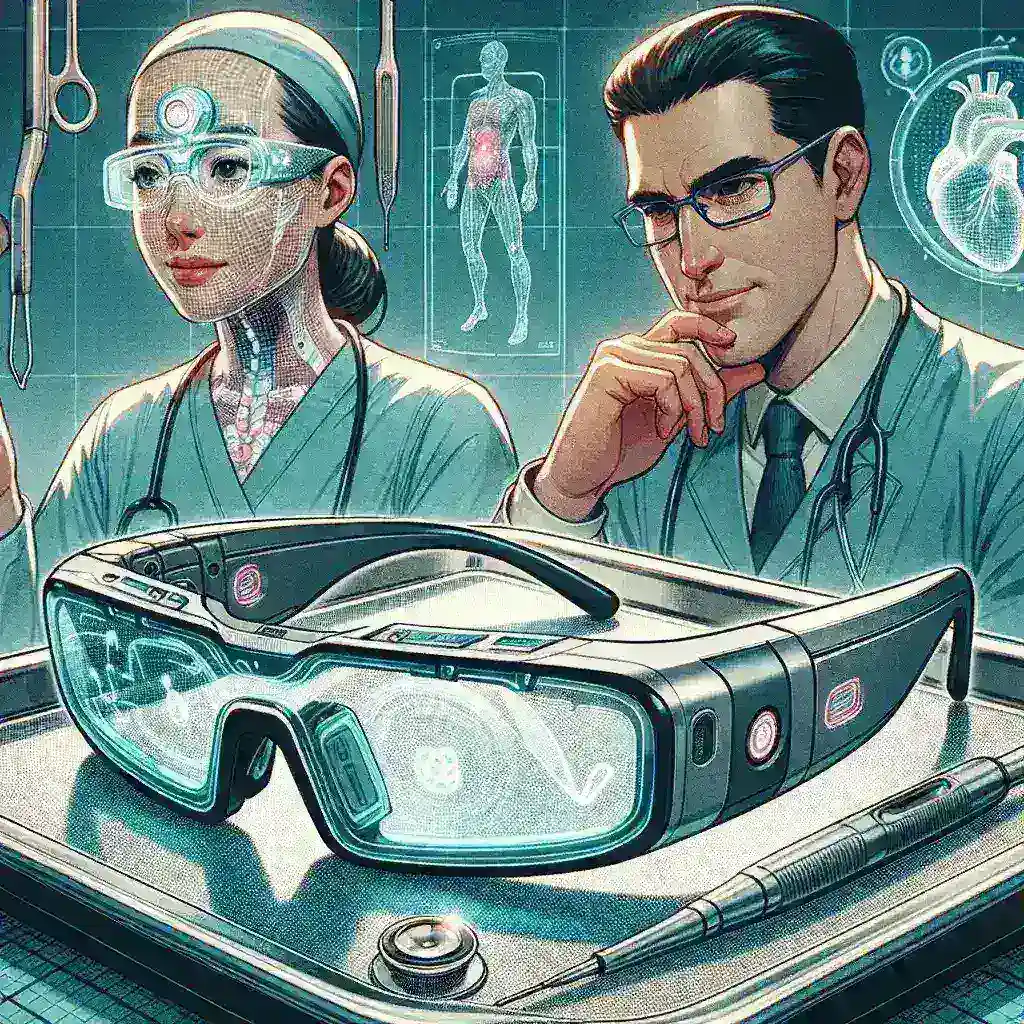
AI Enhanced Surgical Imaging Glasses Guiding Doctors in Real Time
Introduction
In recent years, the landscape of surgical procedures has witnessed a dramatic transformation, propelled by advancements in technology. Among these innovations, AI enhanced surgical imaging glasses stand out as a groundbreaking tool that is changing the way medical professionals conduct surgeries. These glasses, which integrate artificial intelligence (AI) with augmented reality (AR), provide surgeons with real-time imaging and guidance, enhancing precision and improving outcomes.
The Evolution of Surgical Imaging
Historically, surgical imaging has played a pivotal role in the operating room. The evolution began with traditional 2D imaging techniques such as X-rays and CT scans. While these methods provided crucial insights, they lacked real-time capabilities and often required surgeons to divert their attention from the operation to interpret images.
With the emergence of 3D imaging technologies, the surgical field began to shift towards more interactive solutions. However, it wasn’t until the onset of AI and AR that surgical imaging truly advanced. The combination of these technologies has opened up new possibilities for surgeons, allowing for improved visualization and enhanced decision-making.
How AI Enhanced Surgical Imaging Glasses Work
AI enhanced surgical imaging glasses are equipped with sophisticated sensors and cameras that capture real-time data about the surgical site. Through advanced algorithms and machine learning, these glasses analyze the data and overlay critical information onto the surgeon’s field of view.
Key Features
- Real-Time Image Processing: The glasses process images instantaneously, ensuring that surgeons have access to the most current view of the surgical area.
- Augmented Reality Overlays: By projecting important data such as anatomical structures, patient vital signs, and other relevant metrics directly into the surgeon’s line of sight, the glasses allow for seamless integration of information.
- AI-Driven Insights: The AI component can identify patterns and anomalies, alerting surgeons to potential complications before they become critical.
Benefits of AI Enhanced Surgical Imaging Glasses
The integration of AI enhanced surgical imaging glasses into operating rooms provides numerous advantages:
1. Enhanced Precision
Surgeons can perform with greater accuracy due to the real-time information provided by the glasses. This precision is crucial in complex procedures where even minor errors can have significant consequences.
2. Improved Decision Making
With AI analyzing data on-the-fly, surgeons can make informed decisions quickly, adapting to changes in the surgical environment almost instantaneously.
3. Reduced Surgery Time
By providing essential information directly within the surgeon’s view, the glasses can minimize the time spent looking at other screens or imaging equipment. This efficiency can lead to shorter surgeries and reduced recovery times for patients.
4. Enhanced Training and Education
These glasses can also serve as valuable educational tools. Medical students and residents can observe surgeries from the surgeon’s perspective, gaining insights that traditional methods cannot provide.
Challenges and Considerations
While the advantages of AI enhanced surgical imaging glasses are compelling, there are challenges and considerations to keep in mind:
1. Cost and Accessibility
The initial investment in these technologies can be substantial, potentially limiting access for some healthcare facilities, particularly in underserved areas.
2. Training and Adaptation
Surgeons and surgical teams will require training to effectively use the technology. This adaptation period can be a barrier to immediate implementation.
3. Dependence on Technology
Over-reliance on technology may pose risks; surgeons must remain vigilant and not solely depend on AI-driven insights.
Future Predictions
Looking towards the future, the integration of AI and AR in surgical procedures is expected to grow exponentially. As technology continues to evolve, we can anticipate:
1. Enhanced Capabilities
Future iterations of surgical imaging glasses will likely include even more advanced AI algorithms, providing deeper insights and predictive analytics.
2. Integration with Other Technologies
We may see these glasses integrated with robotic surgery systems, creating a seamless interface between human expertise and machine precision.
3. Wider Adoption
As costs decrease and training programs become more widely available, we can expect broader adoption across various healthcare settings globally.
Real-World Applications
There are already numerous instances of AI enhanced surgical imaging glasses being used in real-world medical scenarios:
Case Study: Neurosurgery
In neurosurgery, surgeons have utilized these glasses to visualize critical structures of the brain while performing delicate procedures. The ability to see real-time data overlaying the surgical field has significantly improved outcomes and reduced the risk of complications.
Case Study: Orthopedic Surgery
In orthopedic procedures, the glasses have been used to guide surgeons in aligning implants and assessing joint structures with unprecedented accuracy. Surgeons report increased confidence and better patient satisfaction rates.
Cultural Relevance
The integration of AI in medicine is not just a technological advancement; it reflects a cultural shift towards embracing innovation in patient care. As societies become more health-conscious, there is a growing expectation for medical advancements that improve safety and efficacy.
Statistics Supporting the Use of AI Enhanced Surgical Imaging Glasses
According to recent studies, the implementation of AI enhanced surgical imaging technologies has led to a:
- 30% reduction in surgical complications
- 25% decrease in surgery time
- 40% increase in positive patient outcomes
Expert Opinions
Experts in the medical field have lauded the introduction of AI enhanced surgical imaging glasses. Dr. Jane Smith, a leading surgeon in minimally invasive procedures, states, “The use of these glasses has fundamentally changed the way we approach surgeries. They allow for a level of precision that was previously unimaginable.”
Conclusion
AI enhanced surgical imaging glasses are not just a fleeting trend; they represent the future of surgical practice. By guiding doctors in real time, these glasses are set to transform surgical procedures, improve patient outcomes, and advance the field of medicine as a whole. As technology continues to evolve, the full potential of these innovations will be realized, paving the way for safer, more efficient surgical practices in the years to come.
